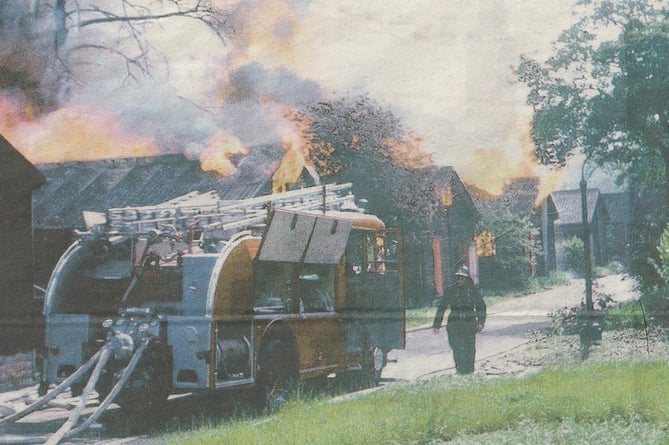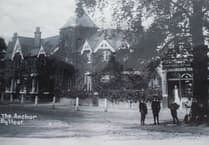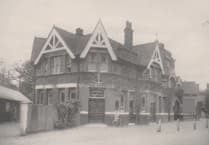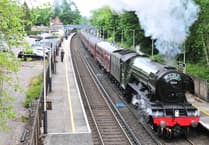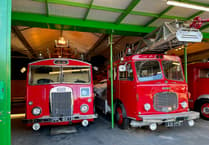The Peeps page of 7 March, which included a story about Inkerman Barracks, brought back some memories for reader Dave Williamson.
He writes: “I always enjoy reading the Peeps page in the News & Mail although I don’t remember the actual main building of Inkerman Barracks at all, despite being raised less than half a mile away.
I suppose it wasn’t on the route to anywhere such as Woking, so we never went past it on the bus.
“I do just about remember the Victoria Café which was where the Co-op now stands in Victoria Road, opposite Wellington Terrace, which itself is a remnant of the barracks.
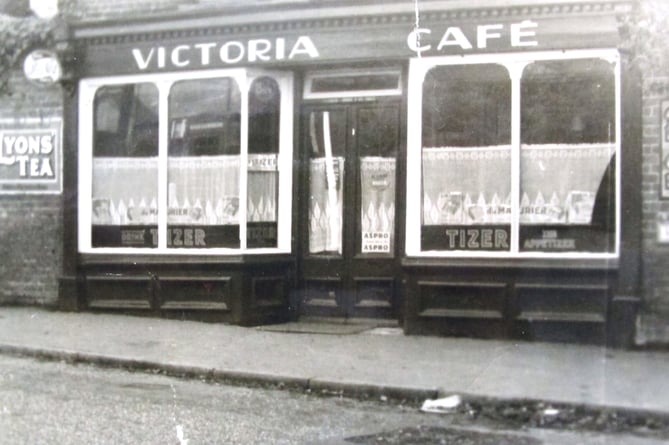
“After the café closed, the Clewlow family who had owned it moved to Knaphill and ran a sweet shop in the parade at the bottom of Anchor Hill.
“I attended Winston Churchill School the year it opened, which was built on the army training ground that was part of the barracks. The school cross-country course used the area behind the school where the Guinness Trust houses were later built.
“Mr Bartlett the art teacher took us for an al-fresco lesson on land where St Johns Primary School in Victoria Road now stands.
“When Winston Churchill School opened, visits by army bomb-disposal teams were quite regular as suspicious objects were often found in the grounds.
“We were forbidden to go near certain areas and there then followed loud bangs from controlled explosions. I attach a rather poor quality snap of a couple of classmates posing by one of the trucks during a visit.”
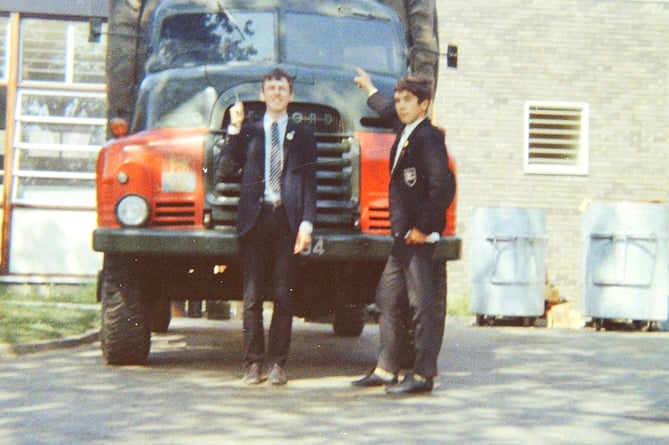
Back in 2010, when I (David Rose) worked for the media group that then owned the News & Mail, we ran a story on its nostalgia page about a fire in 1964 that ripped through some wooden army buildings at the barracks. Here are two of the photos that show the blaze taking hold as fire crews have arrived to put it out.
The News & Mail must have been right on its deadline when the fire broke out, but did manage to include a brief report and photo on its front page of the issue that came out on Friday 29 May 1964.
Under the headline “Yesterday’s big fire”, it reported: “Six disused barrack rooms at Inkerman Bar-racks, St Johns, went up in flames yesterday (Thursday) morning.
“Firemen from Woking and Guildford were called to the scene and fire appliances were in action for well over an hour to bring the blaze under control. The barrack rooms were empty and due for demolition, and no-one was hurt in the fire.”
These colour photos were originally supplied to the News & Mail by Brian Quaintmere. His father had worked at Inkerman Barracks and snapped the blaze taking hold with the fire brigade at the scene. The newspaper report made no mention of any possible cause of the blaze.
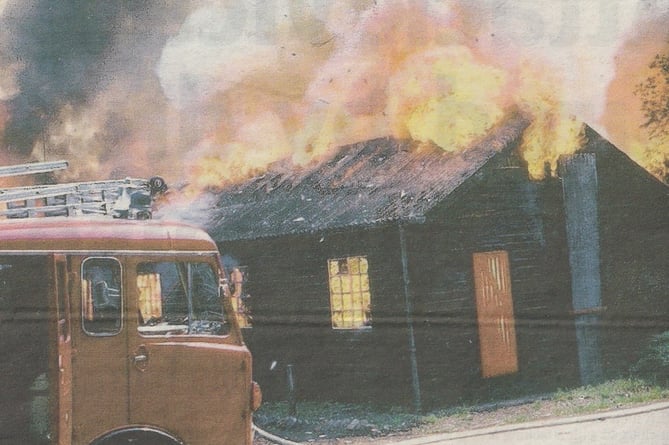
However, for this original story I contacted Ron Shettle (who has now sadly passed away) and asked him about the blaze as he was with Surrey Fire Brigade for many years and part of his career was spent at Woking fire station.
He said these army buildings were known as “Spider” huts and were notorious for going up in flames.
It was a combination of their wooden construction and the creosote painted on them that made them highly flammable.
Although he did not attend this particular blaze, Ron Shettle recalled that he went to several similar army hut fires in the Deepcut area.
Inkerman Barracks at Knaphill was built as a Victorian institution for prisoners who were classed as invalids. The prison once accommodated 700 men and another prison on site housed 400 women.
With a change to Britain’s penal system at the close of the nineteenth century, the barracks was taken over by the military in 1895, and over the decades a number of regiments were stationed there. Its final contingent, the Royal Military Police, left in about 1964-65 and the barracks was demolished.
